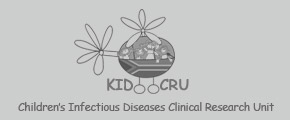HIV & TB
HIV/AIDS
The HIV / AIDS epidemic in Southern Africa is perhaps the single most devastating infectious disease in history. The long, variable dormant phase and insidious onset of the disease have been partially responsible for fueling the epidemic. Unorthodox therapies and beliefs have contributed to various misconceptions about the disease. Science and society have the responsibility to educate people and deliver a clear message backed with well-researched treatment options.
The HI-Virus (human immunodeficiency virus) targets various human cells in order to begin its replication process. The cells mostly targeted, are the T-lymphocyte cells (specifically the CD4 cells). These cells are counted to measure and determine the extent of immune suppression. The virus attaches to a host cell and brings with it three key viral enzymes which is required for intracellular viral replication. These enzymes are also the primary targets for drug therapy. The diagnosis of HIV infection is made by demonstrating the presence of HIV antibodies. In most individuals these develop within 6-12 weeks of infection. The CD4 cell count is the most clinically useful indicator of the degree of immune suppression. An HIV infection is a slowly progressive immune deficiency with a prolonged period of clinical latency, which on average lasts eight years. If untreated, patients eventually develop one or more serious morbid events, which are known as the AIDS-defining illnesses. Death occurs as a result of these illnesses.
Tuberculosis
TB, or Tuberculosis, is a disease caused by bacteria called Mycobacterium tuberculosis. The bacteria can attack any part of your body, but they usually attack the lungs. TB is spread from one person to another. The bacteria are put into the air when a person with TB disease of the lungs or throat coughs or sneezes. TB is a curable disease, however it continues to kill approximately 2 million people each year worldwide.
The Government of South Africa has determined that diagnosis and treatment for TB should be a free service, helping to ensure access to poorer communities who are the most seriously affected. Prevention of Tuberculosis is especially relevant to Africa. Trials show that only patients with a positive tuberculin skin test, benefit from preventative therapy. Prophylaxis should also be offered to HIV infected patients who have had recent contact with open Tuberculosis, or are at high risk (e.g health care workers and miners). HIV infection increases the risk of TB substantially. TB may affect the lungs or be extrapulmonary (where it is regarded as an AIDS defining condition). Extrapulmonary Tuberculosis is therefore more common with declining CD4 levels.


